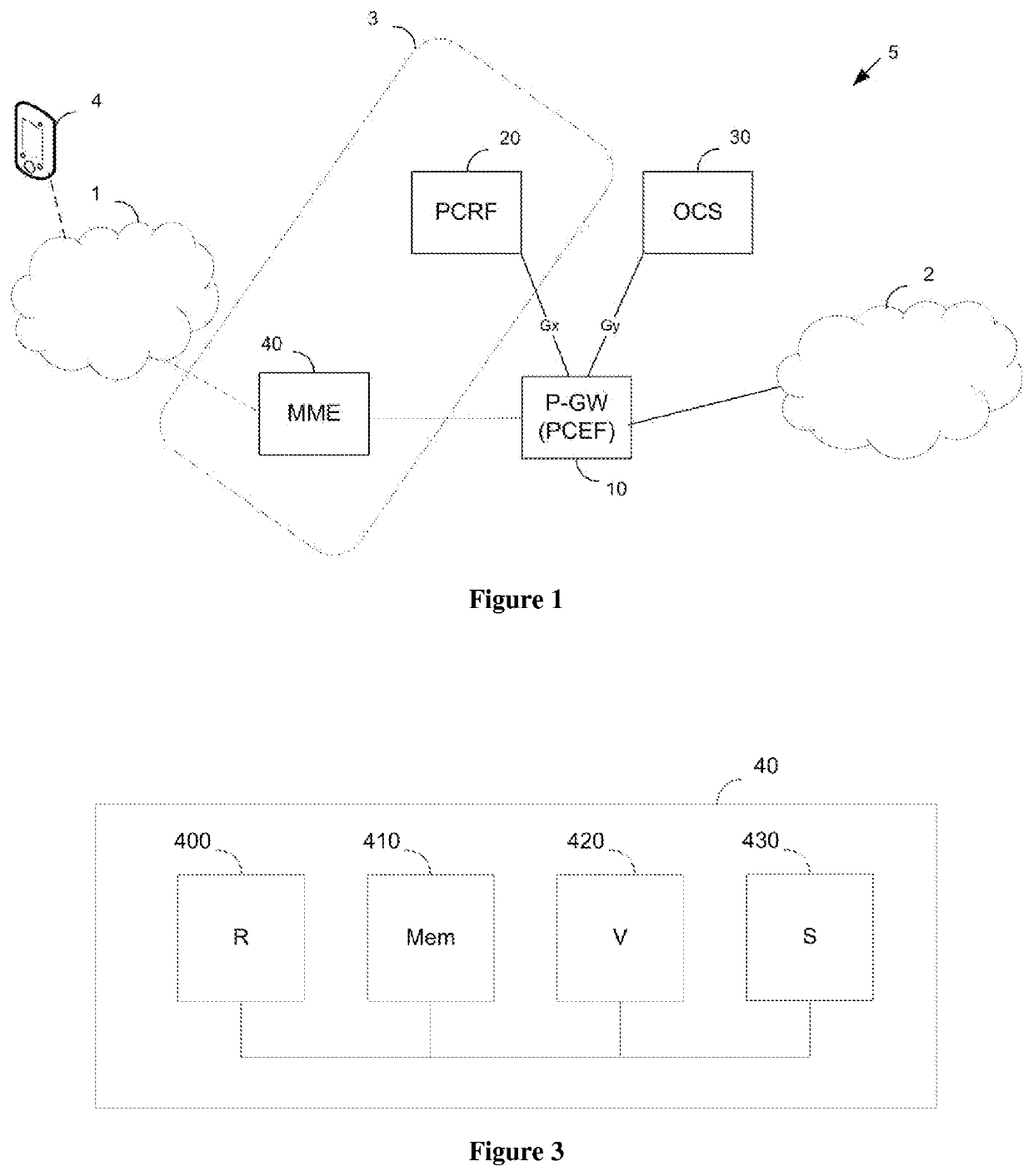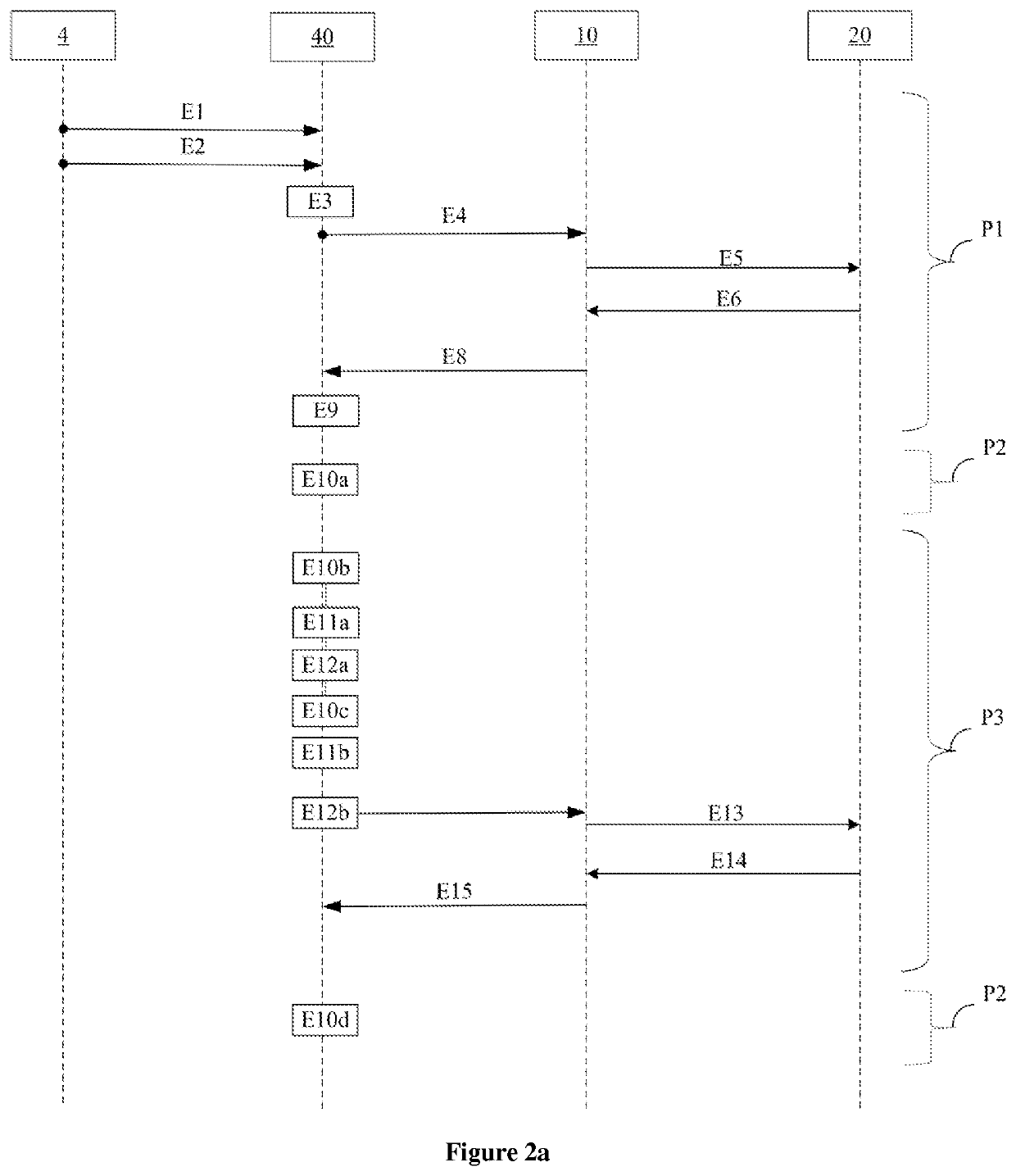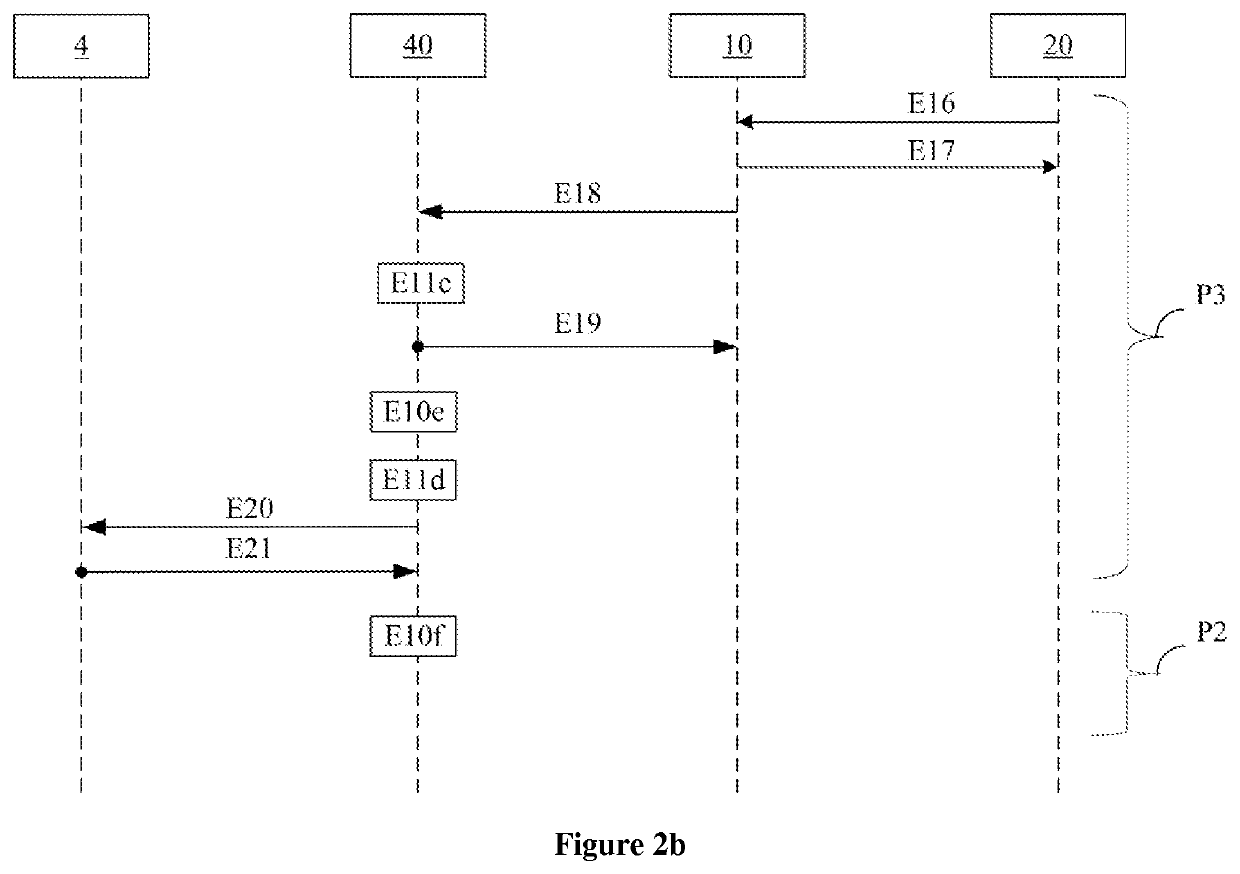Method for managing network traffic related to a mechanism for signalling the presence of a terminal
- Summary
- Abstract
- Description
- Claims
- Application Information
AI Technical Summary
Benefits of technology
Problems solved by technology
Method used
Image
Examples
Embodiment Construction
[0045]FIG. 1 shows a system 3 for managing the network traffic related to a mechanism for reporting the presence of a terminal 4 in a plurality of presence reporting areas of a communication network 5. This communications network 5 is, for example, an EPS (for “Evolved Packet System” in English) network. The terminal 4 accesses the communication network 5 via a mobile access network 1.
[0046]More particularly, the system 3 makes it possible to report a change of location, relative to a presence reporting area, of the terminal 4 for which a communication session is established with a packet communication network 2. The change of location corresponds to an entry or departure of the terminal 4 into or from a presence reporting area of a plurality of presence reporting areas associated with the terminal 4. Such a reporting area is typically a geographic area defined by one or more cells of the mobile access network 1.
[0047]The system 3 is integrated into a PCC architecture and comprises ...
PUM
 Login to View More
Login to View More Abstract
Description
Claims
Application Information
 Login to View More
Login to View More - R&D
- Intellectual Property
- Life Sciences
- Materials
- Tech Scout
- Unparalleled Data Quality
- Higher Quality Content
- 60% Fewer Hallucinations
Browse by: Latest US Patents, China's latest patents, Technical Efficacy Thesaurus, Application Domain, Technology Topic, Popular Technical Reports.
© 2025 PatSnap. All rights reserved.Legal|Privacy policy|Modern Slavery Act Transparency Statement|Sitemap|About US| Contact US: help@patsnap.com



